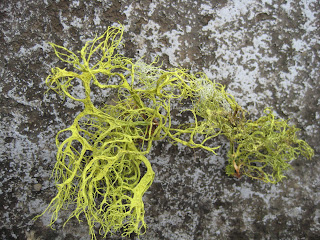Although I have reached an impasse with my my last 2 paintings, I am noticing more and more images and artists that connect with what I am trying to do. The images of delicate, intricate and complex tangles of lines are what I find most compelling. Here's some beautiful lines that just fall out of the trees here in Portland:
And here are some lines by Jan Freuchen, Norwegian instillation artist/painter.
 |
"Ariadne’s Thread"
95 x 80 cm
Oil stick and acrylic paint on wood
2010
The work is an approximate copy of a drawing made by a young girl in an orphanage, post WWII, as captured in the photo by Magnum photographer David Seymour. The drawing was her representation of “home”. |
 |
"New Media" (from a series of 12)
60 x 43 cm each
Ink wash and oil pastel on paper
2010 |
I cannot find much information on the artist in English, but have uncovered this take on his work from a review of his new book "Retreat Center", which is a compilation of works, collages, and writings by the artist:
Many of the works involve some kind of rigid and unbending structure that is confronted with an expressive gesture; the conventional structures that surround us in our everyday lives encounter a seemingly intuitive, free phenomenon. The works appear as a series of questions posed in a repetitive and almost manic way in an attempt to unite these conflicting idioms. Traditionally, the expressive gesture has been perceived as a liberating reaction to a constricted form. In Freuchen’s works, the 'free line” appears equally constrained and obsessive as the controlled, geometric structures – bridging the brush stroke with the Nike swoosh."
I find Freuchen's "expressive" lines enthralling on their own. Although, the "New Media" series seem to work on a few different levels, coupling the expressive lines with the contrast against thick straight manufactured lines, and color versus black and white. Definitely worth more than a cursory glance.

















































